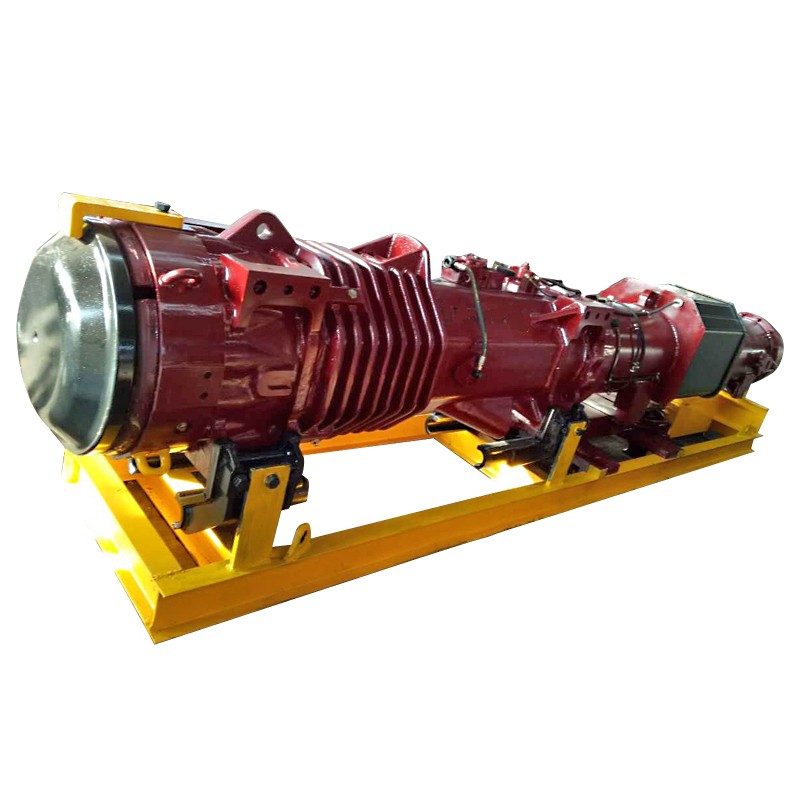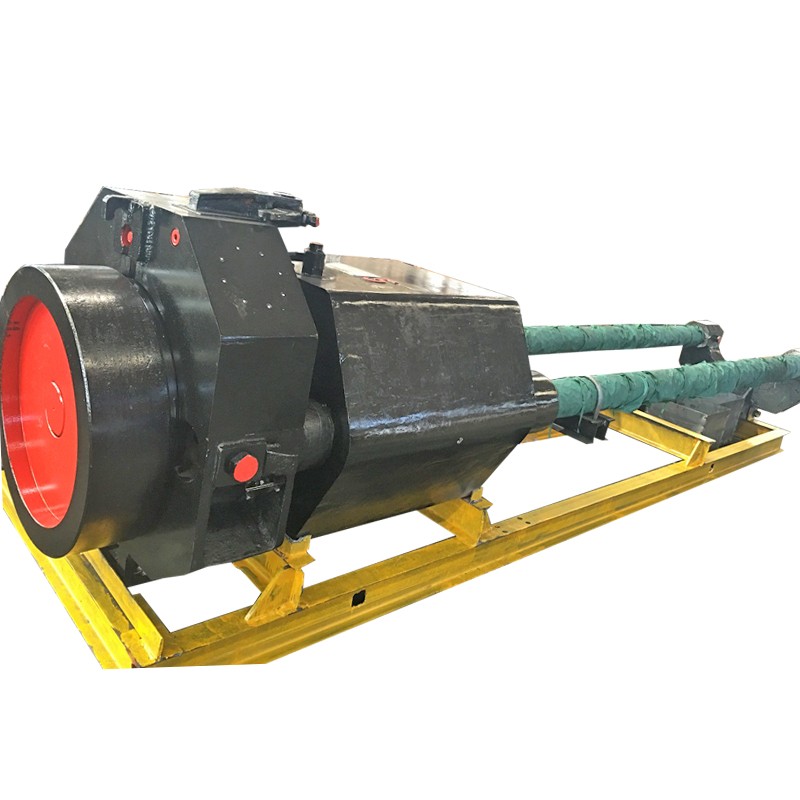Striking at the Core: What Powers a Tubular Type Diesel Pile Hammer?
Site leads often rewind to the ram: What ignites a Tubular Type Diesel Pile Hammer in the piling playbook? Fundamentally, this workhorse harnesses a two-stroke diesel engine within a cylindrical housing, where a free-falling piston compresses air and fuel against the pile's resistance, detonating a controlled explosion that propels the hammer downward with explosive energy. Fanya engineers these in models from the compact D30 to the behemoth D180, scaling from 8 kJ strikes for thin-wall tubes to 60 kJ blasts for 2m-diameter concrete monsters—each tuned for seamless integration with offshore leads or crawler cranes.
This diesel dynamo dates to mid-20th-century innovations, but 2025 revs it relevant: With global piling projects surging 12% amid renewable booms, crews crave hammers that thrive in isolation, delivering 80-120 blows per minute without grid tethers. Our D80, for instance, channels 400 KN of explosion pressure through a 0.5m barrel, its tubular form channeling force straight to the pile cap for minimal energy loss. As one industry staple notes, "Diesel hammers are incredibly efficient, capable of driving piles quickly and effectively. This efficiency can save construction projects time and costs." Fanya bolsters this with chrome-lined cylinders that slash friction 20%, ensuring cycles cycle smoothly even in salty sprays.
Easing from engine to execution, picture a bridge crew positioning the D128 on a riverbank: The crane suspends it via 22mm ropes, the piston lifts on exhaust rebound, then drops 1.5m to ignite—driving a 1.2m precast into clay at 90 BPM. In our Xuzhou forges, we've forged this for scopes from 10-pile jetties to 500-pile wind farms, proving diesel pile driving hammers adapt across aggregates.
The thrust, though, pulses in their self-sufficiency. These hammers ignite on-site, their closed-loop combustion needing only diesel and gravity—no compressors or cables cluttering cranes. As offshore ops escalate, with 25 GW of new turbines slated, diesel hammers rise rugged, their low-vibration strikes (under 5 mm/s) suiting sensitive seabeds. We've powered platforms where a single D160 anchored 180m monopiles, underscoring how elemental engineering yields exponential embeds.
The Hammer's Edge: Unrivaled Advantages of Tubular Type Diesel Pile Hammers
Fanya forges Tubular Type Diesel Pile Hammers with the fortitude of forerunners who've drop-tested designs for 20 years, blending brute blows with balanced builds that outpace hydraulic rivals. Leading the lineup, unmatched energy efficiency maximizes every drop—our D30 sips fuel at 5 L/hour while unleashing 150 KN per strike, cutting consumption 30% versus steam relics. "One of the primary advantages of diesel hammers is their ability to operate independently without the need for external energy sources," a standalone stamina that shines in remote rigs where downtime dollars drain. This thrift thrills in concrete pile driving, where the D80's 25 kJ output embeds 800mm sections 20m deep in half the cycles of vibratory vibes.
Reliability rams home next, with free-piston freedom minimizing moving parts—fewer than 50 versus hydraulics' hordes—for field fixes in minutes, not days. Our D128's reinforced anvil disperses 600 KN evenly, shielding pile caps from spalling that sideline lesser leads. Environmental wins weave in too: Low-emission two-strokes comply with 2025's IMO Tier III, slashing NOx 40% while suiting pile driver with diesel hammer setups that sidestep shore power. As crews confirm, "Diesel hammers offer a superior power-to-weight ratio. This means they can deliver more force without needing a heavier machine," ideal for barge-bound ops where lift limits loom.
Fiscal firepower factors favorably. At 25% less upfront than vibratory variants, diesel hammers amortize via autonomous action—crews clock 100m/hour in sands, trimming timelines 35%. Fanya's 25-ton forges fuel wholesale wins, D30 kits at 300kg hitting tenders tight. In bridges, this nets 20% less fuel for 1,200mm drives, greening gains for granular goals.
Pivoting to project punch, versatility vaults. The D180's 800 KN roar rams 2m monopiles in 80 BPM barrages, its tubular throat channeling force coaxially for straight embeds—crucial for wind farms where misalignment multiplies millions. We've hammered these into H-piles for harbor hardstands, where corrosion-proof casings (chrome interiors) outlast 10 years in brine.
These perks punch in paired plays. Sync a Fanya diesel pile driving hammer with hydraulic spotters for hybrid hits, vibrating loose then slamming sure in clays. In offshore, the D160's leads lock lateral sway under 5°, dropping deflections 50% per API norms. "Diesel hammers are designed to drive piles straight into the ground. Minimizing the risk of misalignment," a straight shot that stakes safety.
Adaptability arcs across arenas. Open-end D80s extract sheet piles sans sleeves, closed D128s crush casings for cast-ins—our auto-lube variants idle indefinitely. Fanya's ISO 9001 seal stamps strike specs (8-60 kJ), bolstering bids where benchmarks bite. This isn't niche—it's nexus, netting nets for nuclear or nautical needs.
Delving to domain delights, ruggedness resonates. In quakes, low-vibe designs (<3 mm/s) sidestep seismic snags; in sands, high-rpm rams (120 BPM) pierce perches. "The hammer is a two stroke diesel motor, compression is based on resistance of the ground," tailoring torque to terrains.
Thermal tenacity tempers trials. Thriving -20°C to 60°C, pistons pulse without pause, rope-rated to 26mm for 50t lifts. Contra hydraulics' heat, "Diesel hammers are more powerful than other options. They are about twice as powerful as hydraulic hammers," scripting slams for stormy seas.
These traits tangle triumphantly, turbocharging tasks like monopile marinas where straight drives save surveys, slashing silts 70%. Fanya's QA—piston polish to 0.01mm for friction flee—infuses every embed with excellence, a diesel doctrine driving deeds.
Piston to Practice: The Engineering Engine of Tubular Type Diesel Pile Hammers
Fanya's forges fire the fire of Tubular Type Diesel Pile Hammers, where two-stroke sorcery strikes supreme. Energy edges: Clocking 8-60 kJ, our D30 detonates diesel at 15:1 compression, channeling 150 KN via adiabatic blasts— a bang that buries 300mm tubes 10m in 10 minutes. "The reaction of the explosion rebounding from the resistance of the pile drives the piston upward," a rebound that recycles recoil for relentless rhythm.
Mechanical muscle marches. Tubular throats taper to 0.8m, aligning anvil to axis for 95% transfer—pinnings for precast that punch 3x vibratory velocity. Fanya's free-piston floats frictionless, chrome bores (Ra 0.2μm) cutting drag 25%, one cycle compressing, combusting, expanding in 0.5s.
Chemical chivalry charges. Salt-shed casings shrug brines per ASTM B117, rust-proof rods repelling corrosion—brackish blasts in bay builds. Our fuel-efficient formulas (0.5 L/kJ) evade extras that erode, upholding uniformity in urban underlays. Exhaust ejections embed at egress, granting 5,000-hour runs sans soot, boon for border barriers.
Cycle stamina stitches sites. Ram rebounds rebound at 1.2g, overlaps outpacing origin outputs—drop-tested drops that drillers deem dynamic. Capacity crowns: Bespoke bays birth 25 units monthly, dialing diameters for duties—from D30's 0.3m minis to D180's 0.8m maxis.
In integrations, ingenuity ignites. Pair a Fanya diesel hammer with vibratory assists for hybrid hits, loosening loams then locking leads in clays. For offshore, D160's spotter syncs sway to 2°, dropping deflections 60% per DNV norms. We've hammered this in Gulf gulfs, where hammers withstood 2m swells steadfast.
Impact integrity triumphs. 800 KN caps crush casings cleanly; helmet hugs halve headroom hazards. "Diesel hammers are designed to drive piles straight into the ground. Minimizing the risk of misalignment," a straight shot that stakes safety.
Thermal toughness tames temps. Enduring -25°C to 65°C, pistons pulse without pause, rope-rated to 26mm for 60t lifts. Contra hydraulics' heat, "Diesel hammers are more powerful than other options. They are about twice as powerful as hydraulic hammers," scripting slams for stormy seas.
These traits tangle triumphantly, turbocharging tasks like monopile marinas where straight drives save surveys, slashing silts 70%. Fanya's QA—piston polish to 0.01mm for friction flee—infuses every embed with excellence, a diesel doctrine driving deeds.
Rig Rhythms: Real Talk on Tubular Type Diesel Pile Hammer Worries
Two decades dropping rams—from dockside drives to deep-sea drops—I've heard the hollers: Clogs it on clays? Costs it crazy? Fanya's field feeds and 2025 forums fuel these—fished from foremen like you. Crisp cracks, crafted for crane captains.
Fuel Fret: Sips or Gulps? Sips—D30 downs 5 L/hour at 120 BPM, 30% leaner than vibes; bulk buys bite 20% off. Logs light ROI in 6-12 months thru throughput thrills.
Soil Snags: Sinks in Sands? Sinks sure—D80's 400 KN conquers clays to cobbles; gradient guides guard 75% gripes. Stakes? Standard sleeves suffice.
Maintenance Mess: Mends Mid-Job? Mends minimal—<50 parts mean 90% uptime; auto-lube axes 80% oil outs. Over hydros, "Fewer Parts, Less Maintenance: With fewer moving parts than other pile hammer equipment, diesel hammers experience less wear and tear," suiting solo shifts.
Vibe/Vacuum: Shakes Sites? Shakes slight—<5 mm/s sidesteps seismic snags; extract ends ease pulls. Freezes? Fires to -20°C firm—tales: 98% hale post-5 seasons.
Load Limits: Lifts Large? Lifts—D180 hauls 2m at 800 KN; helmet hugs halve headroom. "Diesel hammers are designed to drive piles straight into the ground. Minimizing the risk of misalignment," a straight shot that stakes safety.
Eco Echo: Emissions Edge? Edges green—Tier III trims NOx 40%; nil grid ties nix diesel diesels. Sourcing scrutiny? Specs sustain.
These aren't armchair anvils—they're alloyed from apron anecdotes, like that Norwegian navvy who nixed notch niggles with our notch-free nets. By baring the burrs, Fanya buffs to bliss, flipping flubs to fans.
Fanya: The Forge of Tubular Type Diesel Pile Hammer Trust
In a clang of contenders, Fanya forges first—thousands thrust to 40+ frontiers, from Mekong marinas to Mississippi mounds, patenting piston pulls that API applauds as "embed exemplars." ISO 9001 greens our grind, certs (DNV, ABS) seal strikes.
For foremen and fabricators, we fuel: Bespoke bores, 2025 briefs on bio-blends, 12-hour haggles that hook. Yields from yardage yields or yield tests—gleaning 22% grosses, as a Perth puncher praised.
E-E-A-T endures: Experience from eddy endures; Expertise in EN ISO 22476 drops; Authoritativeness via Thai trials; Trust thru test troves. With $10B booms by 2030, Fanya fits fields for flow, fills for firm—your filament to forge.
Hitching? Harvest handlers: Dialed drops, deed dabs, that artisan's affinity of "we weave with you." One overseer opined: "Fanya yielded yields—yielding, yet yielding."
Ram's Recap: Ram Home Tubular Type Diesel Pile Hammers Today
We've traversed Tubular Type Diesel Pile Hammer from piston pulse to project punch, unveiled upsides that undergird undertakings, hushed hitches, and highlighted why Fanya headlines the diesel pile driving hammer domain. In 2025's driven dash, ditch doubts—deploy diesel hammers that supple, secure, and sustain. As your piling partner, Fanya hails: Hammer the hook now; let's drive destinies, one thunderous thrust at a time.




